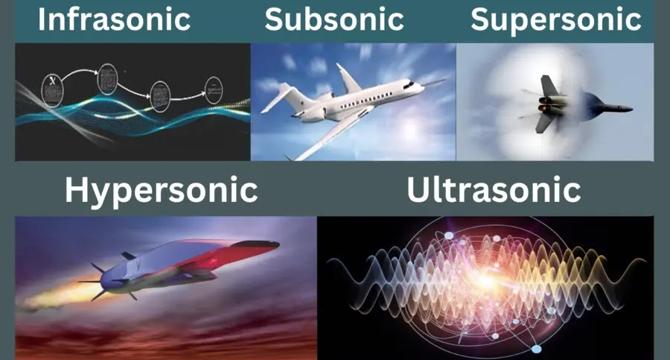Scientificworldinfo
1M
18

Image Credit: Scientificworldinfo
Infrasonic, Subsonic, Supersonic, Hypersonic and Ultrasonic Waves: Explained
- In acoustics and aerodynamics, terms such as infrasonic, subsonic, supersonic, hypersonic, and ultrasonic are used to describe different regimes of wave motion.
- Infrasonic waves are sound waves with frequencies below the range of human hearing, typically defined as waves with frequencies less than 20 Hz.
- Subsonic waves refer to sound waves traveling at speeds below the speed of sound in a given medium.
- Supersonic waves refer to sound waves or disturbances traveling faster than the speed of sound in a given medium.
- Hypersonic waves refer to disturbances traveling at speeds greater than Mach 5.
- Ultrasonic waves are sound waves with frequencies above 20 kHz, which is beyond the hearing range of humans.
- Infrasonic and ultrasonic waves describe sounds outside the human hearing range, with unique applications in environmental monitoring and medical imaging, respectively.
- Subsonic, supersonic, and hypersonic flows relate to how objects move through a medium like air, each presenting increasing levels of complexity in terms of shock waves, aerodynamic heating, and material demands.
- Understanding these distinctions is critical for developing safe and efficient technologies, whether it's designing a commercial jet, a stealth fighter, or a spacecraft re-entering Earth’s atmosphere.
- Applications of these waves and flows range from medical imaging, detecting material fatigue and vibrations, to using sound waves for navigation and communication to cut intercontinental travel to under an hour.
Read Full Article
1 Like
For uninterrupted reading, download the app